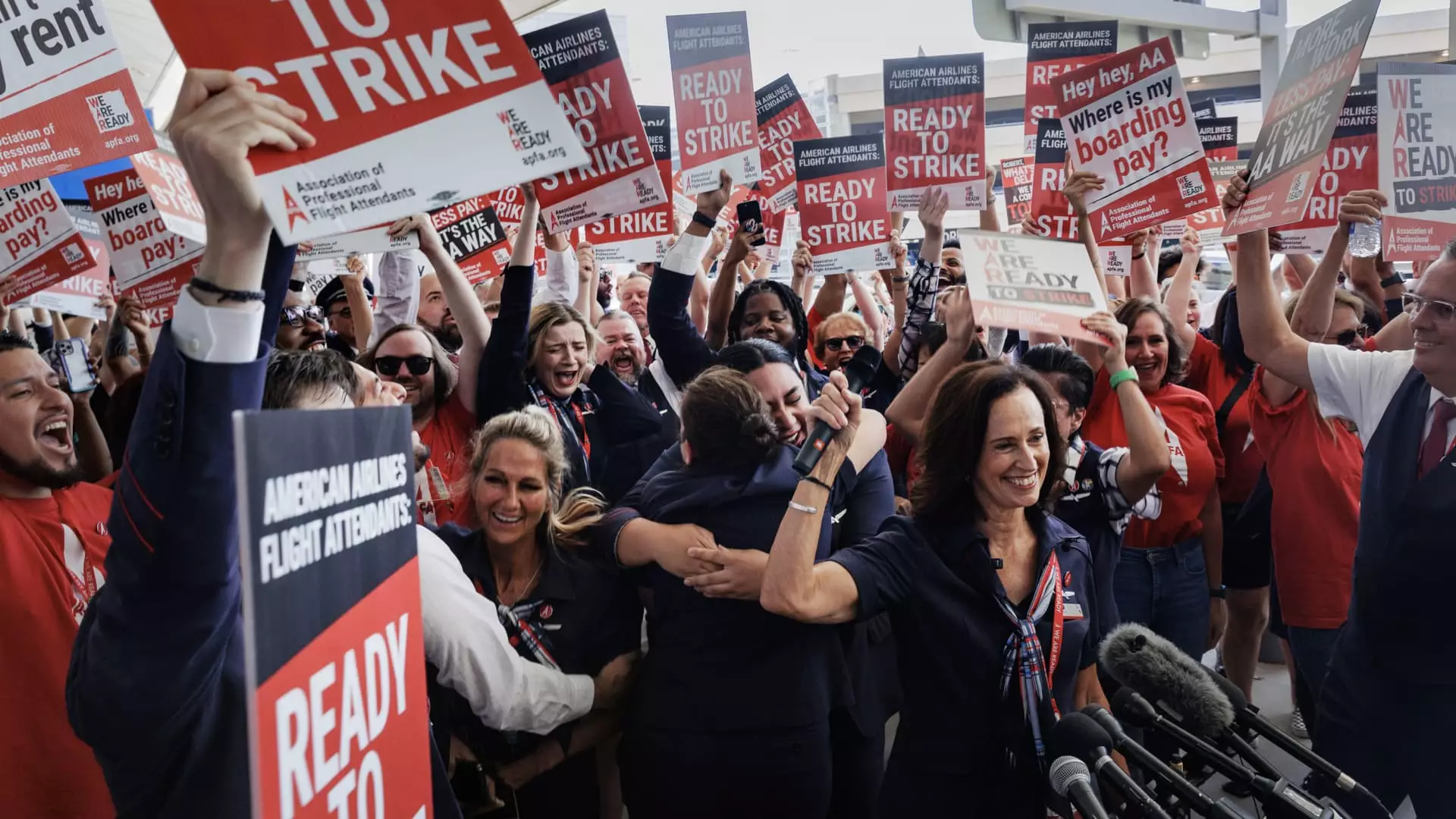In a pivotal development within the airline industry, American Airlines flight attendants have secured a five-year labor agreement that culminates lengthy and often contentious negotiations. Over 87% of the voting cabin crew members endorsed the contract, signaling a significant shift towards improved labor relations and compensation in the airline sector. Starting in October, eligible flight attendants will see substantial raises, with some workers benefiting from increases of up to 20.5%. This contract does not merely provide immediate financial relief but also offers retroactive pay, compensating employees for the delays experienced during protracted negotiations.
The approval of this contract by the Association of Professional Flight Attendants represents a major victory for the approximately 28,000 flight attendants encompassed within American Airlines. Union leadership, including President Julie Hedrick, celebrated this agreement as a significant accomplishment that addresses not just wage concerns but also acknowledges the hardships of prolonged negotiations. For flight attendants across the industry, this successful contract raises hopes for similar outcomes with other airlines, especially as they regroup and strategize for their labor movements.
The successful conclusion of negotiations at American Airlines comes against a backdrop of increasing demands from airline workers for better pay and improved working conditions. The challenges posed by the COVID-19 pandemic exacerbated pressures on labor forces, leading to rising costs of living that have consistently outpaced wage growth. Flight attendants at various airlines are currently advocating for much-needed contract enhancements, indicative of a wider shift in labor dynamics, not limited to the airline sector.
In parallel, negotiations are still ongoing between United Airlines and its flight attendants’ union, with Alaska Airlines facing similar hurdles after its cabin crews rejected a tentative labor deal. These instances illustrate a growing labor movement where similar industries are witnessing rising influence. As seen in fields such as the auto industry and Hollywood, successful labor strikes and negotiations have begun to reshape wage structures, emphasizing the necessity for workers to secure their livelihoods in times of economic instability.
The significance of this agreement was underscored by the involvement of Transportation Secretary Pete Buttigieg and Labor Secretary Julie Su during negotiations, reflecting heightened attention from federal officials. Their presence highlighted the need for labor relations to be taken seriously and for solutions to be reached promptly. This dynamic has undoubtedly contributed to a newfound level of seriousness among corporate leadership at American Airlines, paving the way for resolution that may forestall potential strikes or labor disruptions.
The successful negotiation at American Airlines sets a precedent not just for the airline industry but for workers across a spectrum of fields grappling with similar issues. As labor organizations garner increasing attention and support from government entities, the landscape of vocational struggles may soon see more favorable outcomes for employees seeking equity and fairness. The next chapters of labor dynamics will be interesting to observe as unions continue to push for substantial changes in their respective sectors.

